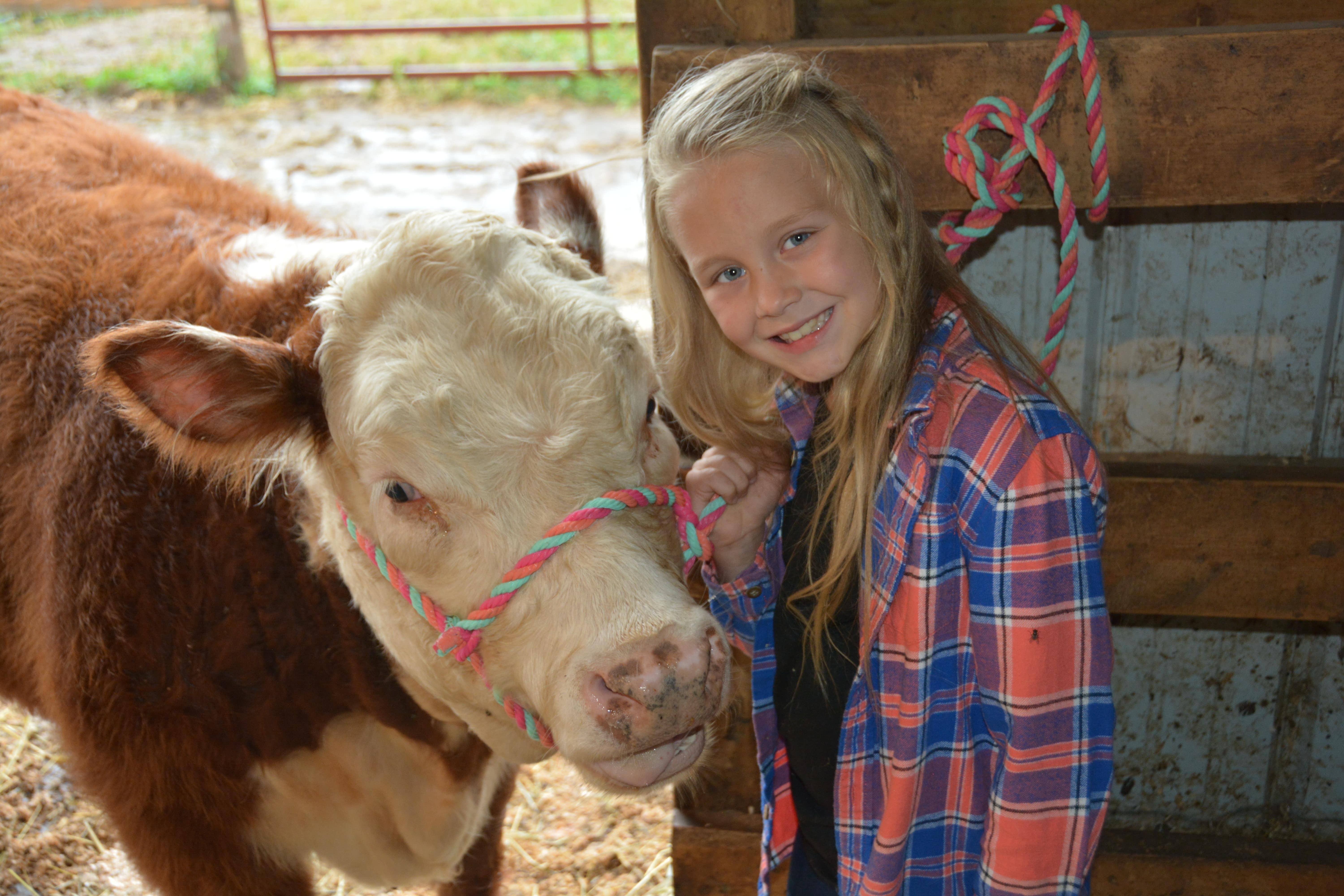Stay Informed
Making It Small: Miniature Herefords may be small, but their popularity is growing
As a breed, Miniature Herefords have a lot going for them. They are compact, efficient, docile, easy to handle and mature quickly. They eat considerably less than their full-size counterparts, and they even produce very tasty meat.
 But they also are really cute.
But they also are really cute.
And their popularity is growing, according to Debbie Flohr, breed manager for Miniature Herefords at the Indiana State Fair. While much of that growth has so far been seen in states farther west, such as Colorado, Iowa, Nebraska, Oklahoma and Texas, “It’s kind of making its way east,” she said, and there are now reputable breeders in Indiana and Ohio.
As of 2023, the number of Miniature Herefords exhibited at the state fair’s open show had in just a few years grown from 10 to 28. Only Angus and regular Herefords had higher representation, Flohr said. At the National Western Stock Show in Denver, demand is such that there are both open and junior shows for Miniature Herefords. The Miniature Hereford Breeder Association lists more than 500 members, who can be found in nearly every state.
The only difference between a Hereford and a Miniature Hereford is the height and overall size. The Miniature Hereford has been developed over the last 30 years by selective breeding of stock that was originally imported to the U.S. from England in the early 19th century, according to The Cattle Site, a knowledge-sharing platform for the global cattle industry.
“A female cannot exceed 45 inches at the hip, while for a male, it’s 48 inches at the hip,” Flohr said. In contrast, a regular Hereford female might be 55 or 60 inches at the hip while a male might be 60 or 64 inches.
But despite the much smaller size, the miniature variety has the same body profile as a full-sized Hereford in terms of proportions, The Cattle Site says.
One of the major attractions of Miniature Herefords is that they are easier to handle and therefore easier to show, particularly for kids. That’s why Trent Hostetler got one. Hostetler is an Indiana Farm Bureau Insurance agent in Elkhart County who also raises a few cattle (primarily regular Herefords), and he got interested in Miniature Herefords because his granddaughter, Quinley Pinion, was interested in showing cattle. But there was a catch.
“She wanted to show by herself,” Hostetler said. This past summer, at the tender age of 7, she showed a Miniature Hereford named Daisy at the open class show at the Elkhart County Fair.

“By the time she gets to 4-H, she’ll be very experienced,” Hostetler said.
For Hostetler, once he started considering miniature cattle breeds, Miniature Herefords were his first and only choice.
“I’ve always liked the temperament” of Herefords, he said.
Flohr’s path to Miniature Hereford ownership is a bit different. Her dad raised regular Herefords while she was growing up in Bartholomew County, so she’s always had an interest in cattle. She and her husband, Rick, eventually purchased Angus cattle for their Jackson County farm.
“But I didn’t connect with them – they’re just not what I was used to,” she said. Then in 2008, Rick read an article about Miniature Herefords.
“I’d never heard of them,” she said, adding that originally she wasn’t too interested because she “assumed they were one of the freakishly small breeds.” But then she started seeing them at shows and got hooked. In 2009, the Flohrs bought eight bred heifers. They eventually sold that herd, but Flohr missed it so much that in mid-October of this year, she bought some new Miniature Herefords.
For Flohr, Miniature Herefords are really a return to how Herefords used to be.
“They are like the original ones that came over from England,” she explained. “It takes me back to what my dad had – so for me, it’s personal like that.”
Miniature Hereford Breeders Association, www.miniatureherefordbreeders.org.




